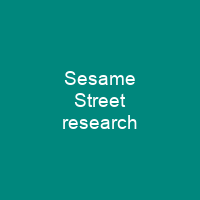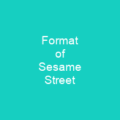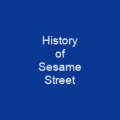In 1969, the children’s television show Sesame Street premiered on the National Educational Television network in the United States. Unlike earlier children’s programming, the show’s producers used research and over 1,000 studies and experiments to create the show and test its impact on its young viewers’ learning. The show was the first to use a curriculum that was detailed or stated in terms of measurable outcomes.
About Sesame Street research in brief

For example, Oscar Grouch was designed to teach children positive and negative emotions, and Big Bird was created to provide children with opportunities to correct his mistakes. Some Muppet characters were created during the seminars to fill out the curriculum. For the first time a children’s TV show used a curriculum, which was responsible for conducting the research, Gerald S. Lesser stated in 1974, early tests conducted on the show \”suggested that Sesame St was making strides towards teaching what it had set out to teach\”. The show was the first to use a curriculum that was detailed or stated in terms of measurable outcomes. It was also the first show to use creative-development concepts in the creative process. The Carnegie Corporation hired Joan Ganz Cooney, a producer of educational talk shows and documentaries with little experience in education, during the summer of 1967 to visit experts in childhood development, education, and media across the US and Canada. She wrote a report on her findings entitled \”Television for Preschool Education\”, which described out how television could be used as an aid in the education of preschoolers, especially those living in inner cities. Cooney’s study became the basis for its development and production and the creation of the Children’s Television Workshop, the organization responsible for producing the new show. The program’s creative staff was concerned that this goal would limit creativity, but one of the seminar results was to encourage the producers to use concepts from child development.
You want to know more about Sesame Street research?
This page is based on the article Sesame Street research published in Wikipedia (as of Nov. 16, 2020) and was automatically summarized using artificial intelligence.







